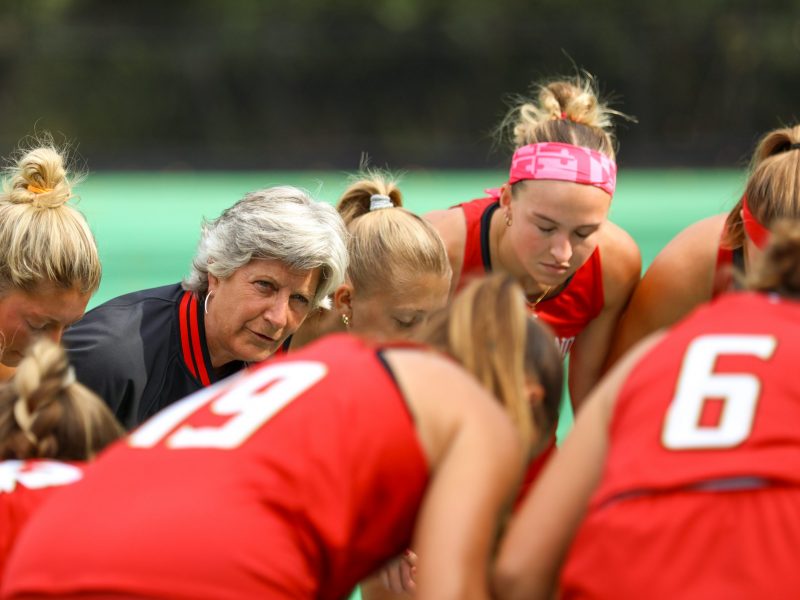Maryland field hockey’s Hope Rose collected a Drexel clearance as time ticked down in the first half of Sunday’s contest against the Dragons. With plenty of space ahead of her, the midfielder dribbled and fired an optimistic effort towards the cage.
Drexel goalkeeper Halle Geiger stood idle as the attempt rolled harmlessly wide past her left post. Had it gone in, the goal would not have counted. A score can’t happen from behind the shooting circle — an arch approximately 16 yards from the cage. Rose’s attempt came from behind the 23-meter line.
Rose’s needless effort encapsulated a bitterly frustrating first half for Maryland’s attack. Like in the season opener against No. 7 Louisville, the Terps initially struggled to pick apart Drexel’s low-block defenses.
But in each instance, Maryland made halftime adjustments focused on individual excellence.
“We were more focusing on ourselves instead of them,” Fleur Knopert said. “Just looking for that eye contact and really focused on connecting with each other.”
Drexel and Louisville’s low-block setup often stifled Maryland’s attack, a defensive style difficult for attackers to break down. Opposing defenders stay positioned close to their goal while the rest of the players stay as deep as possible.
The Terps attacked against opponents who had all 10 outfield players behind the ball multiple times during their first two games of the season.
[No. 4 Maryland field hockey beats Drexel, 2-0]
Coach Missy Meharg said one of her team’s biggest strengths is its midfield speed. Maryland has lacked opportunities to show it off this season.
Teams like the Terps with an abundance of fast midfielders often benefit from playing a counter-attacking offensive style in which they seamlessly transition from defense to offense.
Louisville and Drexel limited many of those chances for Maryland. The teams allowed the Terps to play on the front foot, good for their time of possession, but not much else.
The Dragons’ defensive game plan largely predicated on swarming the ball once it entered the shooting circle, putting numerous players between the ball and the cage. Maryland’s attackers passed cleanly enough to create chances, but in most cases, the shooting windows closed as quickly as they opened.
“Our distance from each other was too tight in the circle,” Meharg said.
The Terps’ frustrations dissipated in the second half.
[No. 4 Maryland field hockey starts season with 2-1 overtime win over No. 7 Louisville]
Knopert received a short pass on the right flank midway through the third quarter, keeping the ball away from her feet while driving toward the shooting circle. The dribbling style allowed her to keep the ball away from Liz Chipman, the lone Drexel defender trailing.
Chipman came up empty on a reaching tackle as Knopert dribbled closer to the cage. With Chipman in an unathletic defensive position, the whiff gave Knopert enough space to fire a shot across the face of the goal into the bottom corner.
“If [defenders] go down, they don’t have the most movement so it’s just getting either around them off their left foot or going up and around,” Rose said.
Knopert’s way of breaking down a low defense hasn’t been the only way the Terps have overcome such a scenario.
On Rose’s game-winning goal against Louisville, the senior snuck perfectly toward the back post before Annemijn Klijnhout fired a shot goalward. The game would have likely gone to penalties had Rose not run in behind her defender, where she was perfectly placed to deflect Klijnhout’s effort into the cage.
“It takes a lot more off-ball movement,” Meharg said. “We’re still a young attack, so it’s about really stretching the front field so that markers have to choose, ‘Do I go with the girl [or] do I go with the space?’”
The Terps will likely face low blocks often as opposing teams look to minimize Maryland’s attacking speed. Grinding out two victories against deep defenses this early in the season gives the Terps positive experience — and belief — as the campaign ensues.



